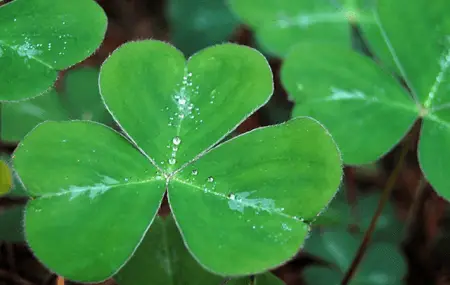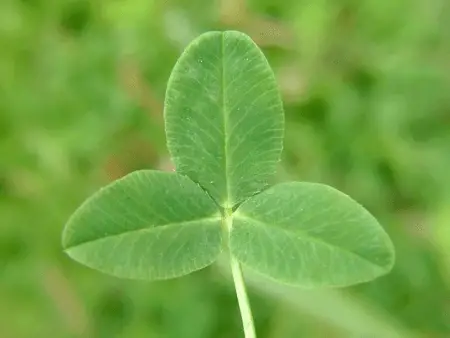What kind of leaf symbolizes St. Patrick’s Day? A clover? Shamrock? Both?
Some people are sure it’s a clover, but others argue that it’s a shamrock. Others may say it doesn’t matter because both are the same anyway. Are they really the same? If you are not Irish, and you are just as confused as some people are, you are in the right place. In this article, the difference between a shamrock and clover will be discussed.
Summary Table
| Shamrock | Clover |
| Symbol of Ireland and St. Patrick’s Day | The four-leaf variant symbolizes luck |
| Refers to white clover or suckling clover | A common name that refers to any of the 300 trefoils or Trifolium plants |
Descriptions

The term shamrock is derived from the Gaelic word seamrog which means “little clover.” It is famous as a symbol of Ireland. St. Patrick believed that the three tiny leaves represent the Holy Trinity, which it is all over the place on St. Patrick’s Day.
There is no specific “shamrock plant.
” However, most scientists agree that the term “shamrock” refers to Trifolium Repens or the white clover. Others believe that it is also used when referring to Trifolium Dubium or suckling clover.
Both species have leaves that are separated into three leaflets, hence the term “trifolium.”

On the other hand, clover or “trefoil” is a common term that refers to any of the 300 species that belongs to the Trifolium family. Trifolium plants like the red clover, white clover, Swedish clover, strawberry clover, and Alsatian clover are small, green, flower-bearing, and herbaceous. They can be short-lived, perennial, or annual.
A clover is trifoliate, which means the leaves are subdivided into three toothed leaflets, although four-leaf, five-leaf, and six-leaf clovers can be occasionally found due to a natural genetic mutation. It is believed that there is only one four-leaf clover in a hundred thousand three-leaf clovers, which is why it is widely accepted as a symbol of luck. Some people also believe four-leaf clovers represents faith, hope, love, and luck.
Other Interesting Facts About Shamrocks
Shamrocks, such as white clover (Trifolium repens) is a perennial plant that’s short-lived and can reseed in the right conditions. It also grows and spreads pretty fast. This particular plant prefers cool, moist weather and is used as forage grass for cattle.
White clovers are also classified as “small clovers” and can keep growing even under continuous grazing. White clover is also harvested for hay or silage.
It’s considered a valuable pasture plant, even over grass pastures.
Suckling clover (Trifolium dubium) is another small clover is another perennial plant that is smaller than other types of clover. This clover is also low-growing and prefers cooler weather. The plant has yellow flowers clustered around a small head, with green stems that usually sprawl.
These plants are not available to buy as seeds; however, they seed naturally on their own. They are also used as silage in mixed grass pastures. The flowers of suckling clover are also used as a bee crop. Moreover, when suckling clover grows in an apple orchard, the apples tend to taste better.
What About Clover?
Clover is an edible plant and is used as a medicinal herb, which comes as a surprise for many people. These plants grow all over the world, where they are used in yummy recipes and to improve human health.
The leaves of the clover can be used in salad, or you can boil the flowers to make tea. It’s even possible to buy clover supplements to improve your health.
According to the FDA, clover is classified as an animal feed and medicine. That’s because clover contains some essential nutrients, including:
- Vitamin B1
- Vitamin B3
- Vitamin C
- Calcium
- Chromium
- Magnesium
- Phosphorus
- Potassium
These plants also contain isoflavones, which have anti-inflammatory and antioxidant properties. Clover is said to improve bone health, the prostate, arteries, and more.
Shamrock vs Clover
What, then, is the difference between a shamrock and a clover?
“Clover” is a generic term that refers to trefoils, or any of the 300 species that belong to the Trifolium family. These plants have leaves that are separated into three leaflets, but you may find four-leaf, five-leaf or even six-leaf clovers as a genetic abnormality. “Shamrock,” on the other hand, means “little clover” and is used to refer to the white clover species or the suckling clover species. It is also the symbol of Ireland and St. Patrick’s Day.
In conclusion, shamrocks are clovers, but not all clovers are shamrocks. So, that green leaf you see on St. Patrick’s Day? It’s a shamrock and a clover.





